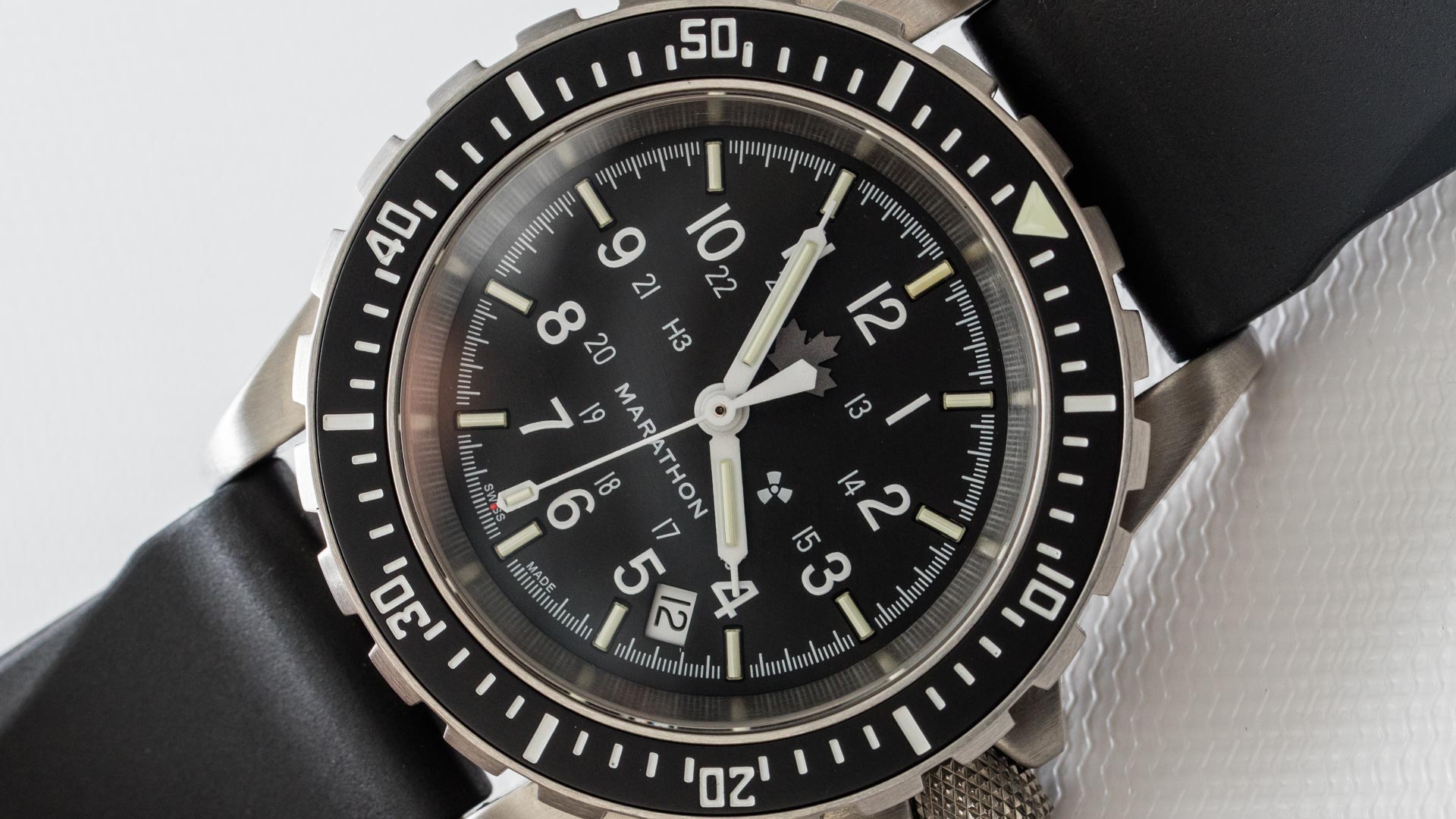
The Marathon Search & Rescue Diver’s Automatic (GSAR) watches is one of the best no-nonsense mechanical watches around. This particular model is a special edition version of the GSAR known as the “Grey Maple” (reference WW194006-CA-MPL). Aside from the applied grey-colored maple leaf on the dial, I believe this watch is the same as the non-Maple edition versions. Marathon is a rare Canadian-based watch maker, and in my opinion, they are unlike any other watch brand today. What makes Marathon unique is that they are one of the last remaining non-luxury tool-watch makers in existence. Marathon is often known to watch collectors as being among the very few brands still officially selling timepieces to the military – which includes United States and Canadian military branches.
“GSAR” stands for “Government Search and Rescue.” Particular individuals in various branches of the military are indeed still issued watches (although most rank & file soldiers are expected to purchase their own timepieces). I was graciously educated about Marathon by its leader, Mr. Mitchell Wein, who inherited his role in the nearly century-old family business. Mr. Wein’s knowledge about the history of tool watch makers and the North American wrist watch industry in general is to be envied. One of the most interesting facts he told me is that more than a few in the military still prefer to equip their soldiers with mechanical watches versus quartz watches. Why? The reason is because of the fear that an EMP (electromagnetic pulse) blast will be used offensively and would render anything with circuits in it dead. Mechanical watches are immune from EMPs, and for soldiers to coordinate at all on a battle field they certainly need to know the time.
Having seen countless functional watches out there, many of which claim to be or even legitimately are “military watches,” I have to say that the Marathon Search & Rescue Diver’s Automatic stood out for a number of reasons. I found myself on many occasions choosing to wear this admittedly humble, non-flashy timepiece when I had plenty of other “luxury” options to go with. Timepieces like this help remind me why I got into watches in the first place.
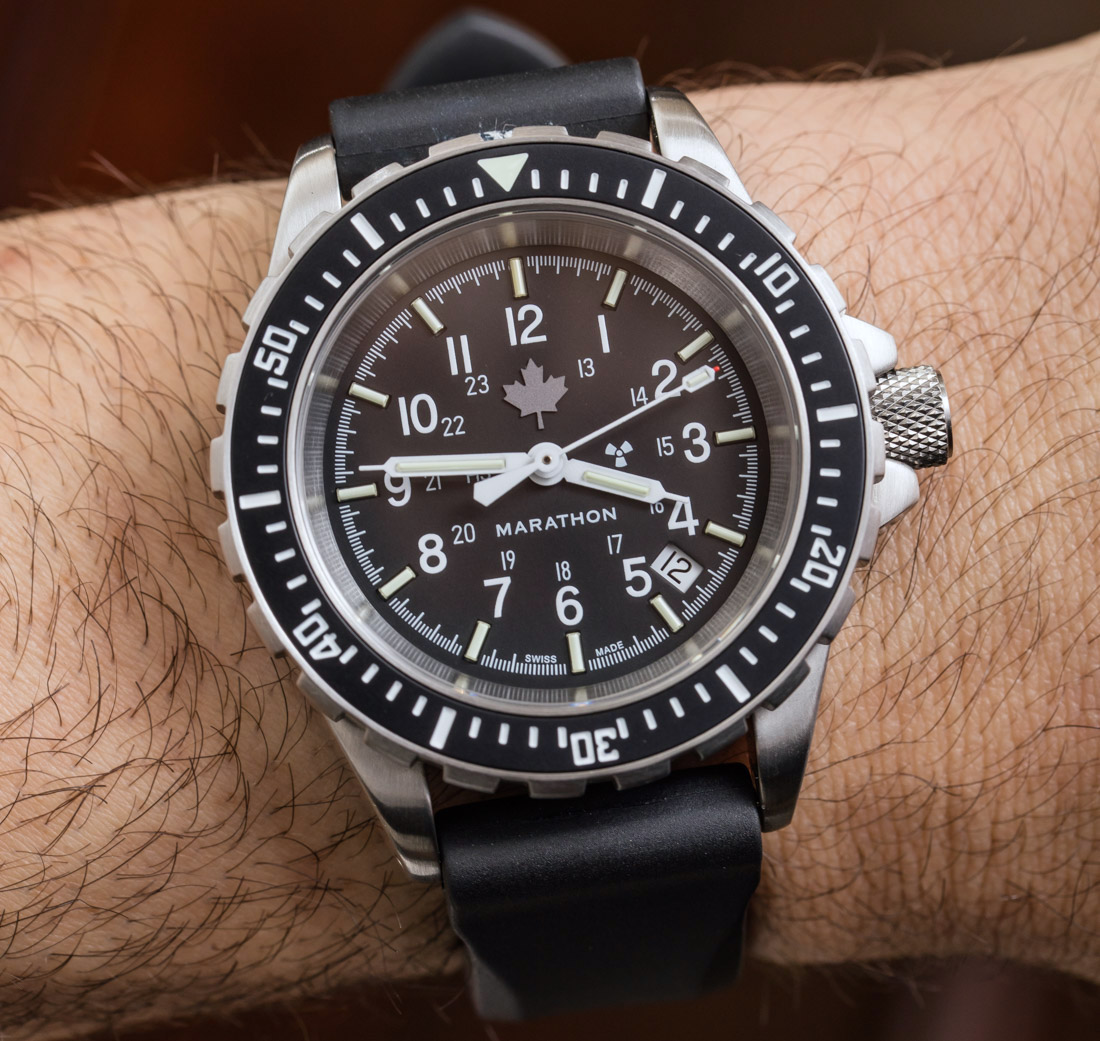
Marathon Search & Rescue Diver’s Automatic: Concept
The Search & Rescue Diver’s Automatic is a dive watch at heart and designed to meet ISO 6425 standards. So, in the most basic sense, this is a true diver’s watch with 300m of water-resistance and all the utility and legibility features that go with it. The GSAR is also a military watch, and right on Marathon’s website they say the GSAR is “manufactured in accordance with US Government specification. Issued to and worn by troops in Iraq and Afghanistan.” The Grey Maple version indicates that it is “manufactured in accordance with the Canadian Government requirements,” so I think it is safe to say that both US and Canadian military branches approve of the GSAR for use in field operations including on land and in water.
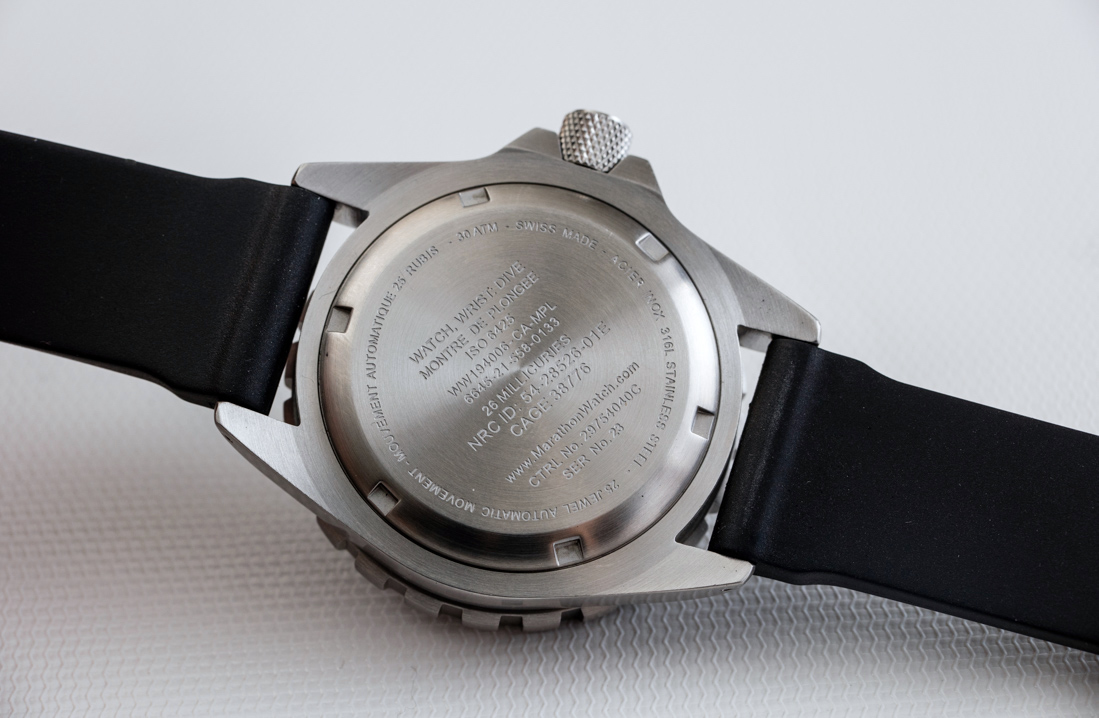
What makes it a “search and rescue watch?” That is a good question. I’m not familiar with any specific designation for search and rescue operation watches aside from the fact that they must be adept in a series of situations and environments. Accordingly, the GSAR’s design has elements of both traditional dive watches as well as field watches. Everything about the watch is related to utility – which is really part of its charm. It is also a very well-made product and is among the most “sober” types of watches I know of that are actually produced and assembled at Marathon’s Switzerland-based factory located in the watchmaking town of La Chaux-de-Fonds.
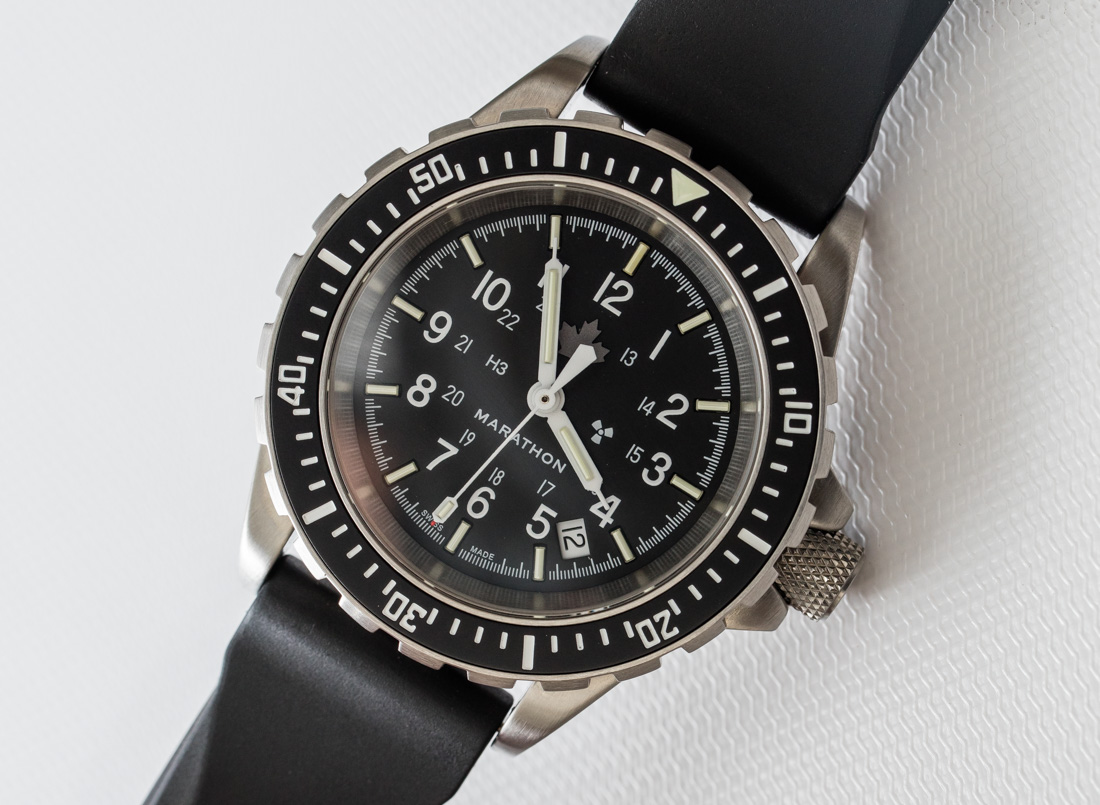
Marathon Search & Rescue Diver’s Automatic: Design
Marathon produces a few different diver’s watch-style timepieces with various movements and in various sizes. The Search & Rescue Diver’s Automatic GSAR is mid-sized in their collection being 41mm wide and 14mm thick. The overall design is classic at this point and mostly based on various design elements approved for military use, such as the dial. Decorative elements are negligible as flashiness is not what the GSAR is about. Yet it is handsome because a very effective tool is good-looking. The design is appreciated for its restraint, legibility, comfort, and focus on durability and effectiveness. One can easily appreciate the high-contrast surfaces, lack of readability-destroying reflective surfaces, and impeccable proportions that just feel right.
I am usually into larger watches but I found the 41mm-wide size for the Grey Maple to be ideal. The GSAR doesn’t wear too large, yet the thick case prevents it from feeling petite. What you get is a movement that logically fits in the case, as well as a dial whose various elements seem to make good sense given the overall placement of the date, size of the hands, and overall size of the dial compared to the case.
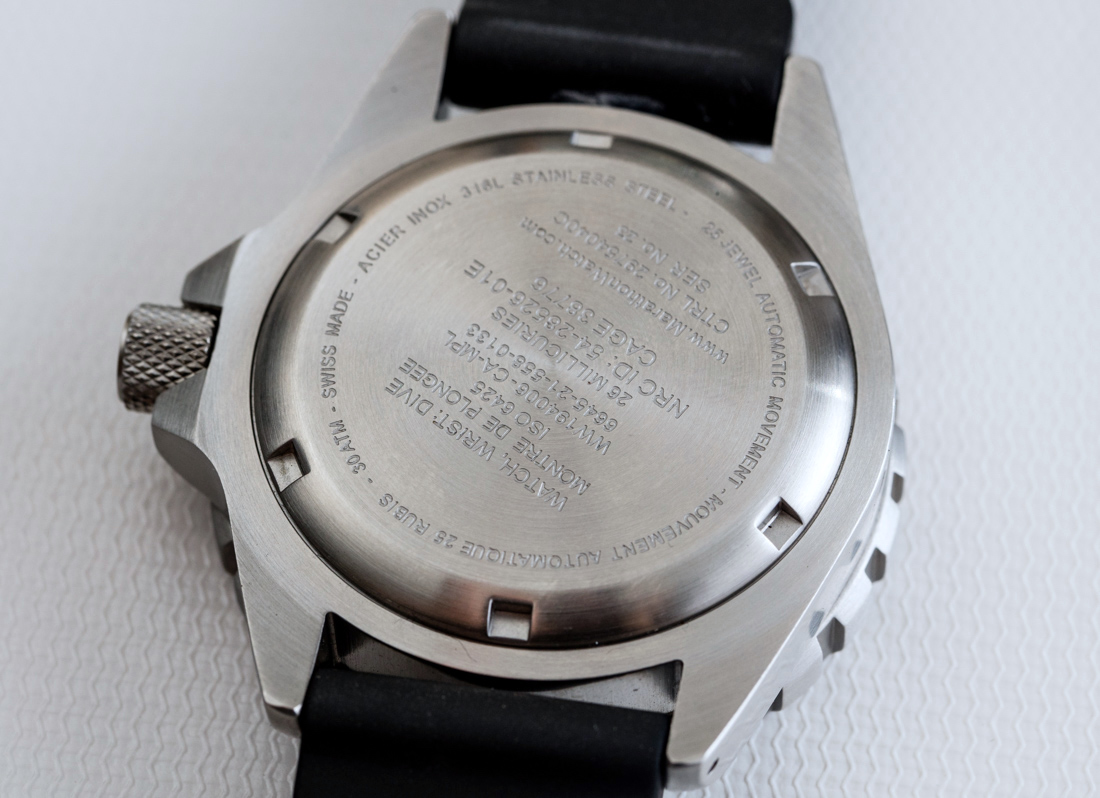
The case back provides information in a way that is utilitarian and without fuss. But, going back to the dial of the watch, a key value proposition is the use of tritium gas tubes in both the hands and the hour markers. This even includes a gas tube in the seconds hand.
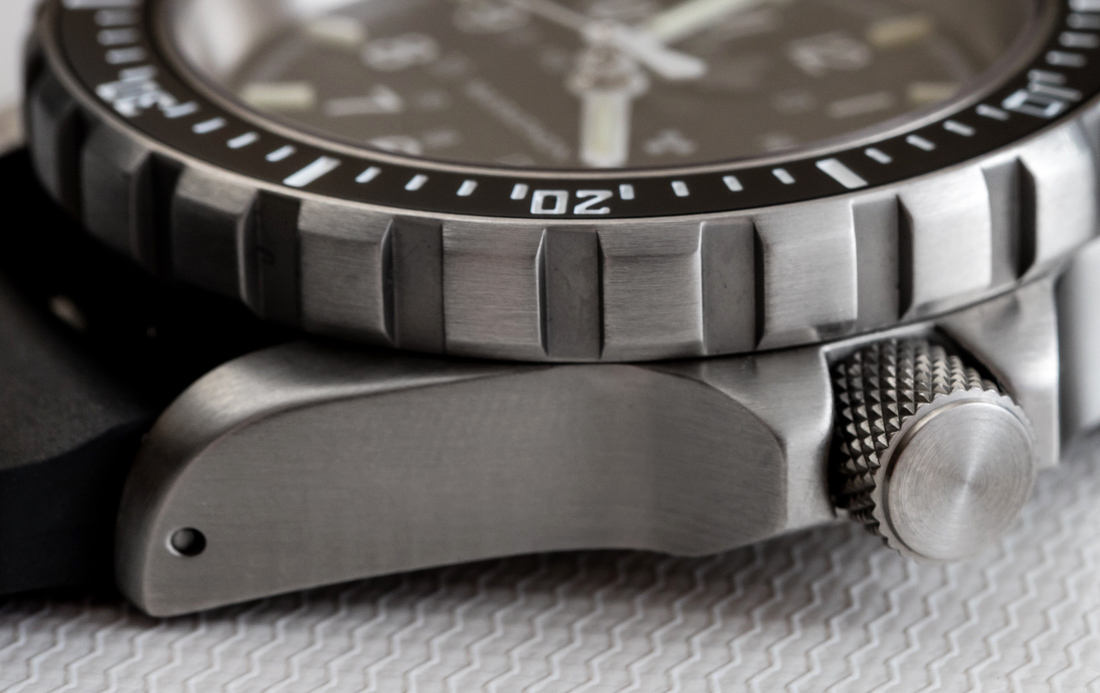
Marathon Search & Rescue Diver’s Automatic: Watch
Marathon uses an all-brushed 316L stainless steel case with an impressively sized knurled crown (with crown guards) and a rather thick bezel. This latter element is not only designed to be easily gripped by gloves, but the bezel is also “tall” because of the dial’s depth. Why is the dial so deep? Because of the tritium gas tubes which allow for easy reading of the dial even in total darkness. Marathon has to order especially long bushings for the hands’ mount to accommodate the height, and this is because they are thicker than normal due to the tube mounted in them.
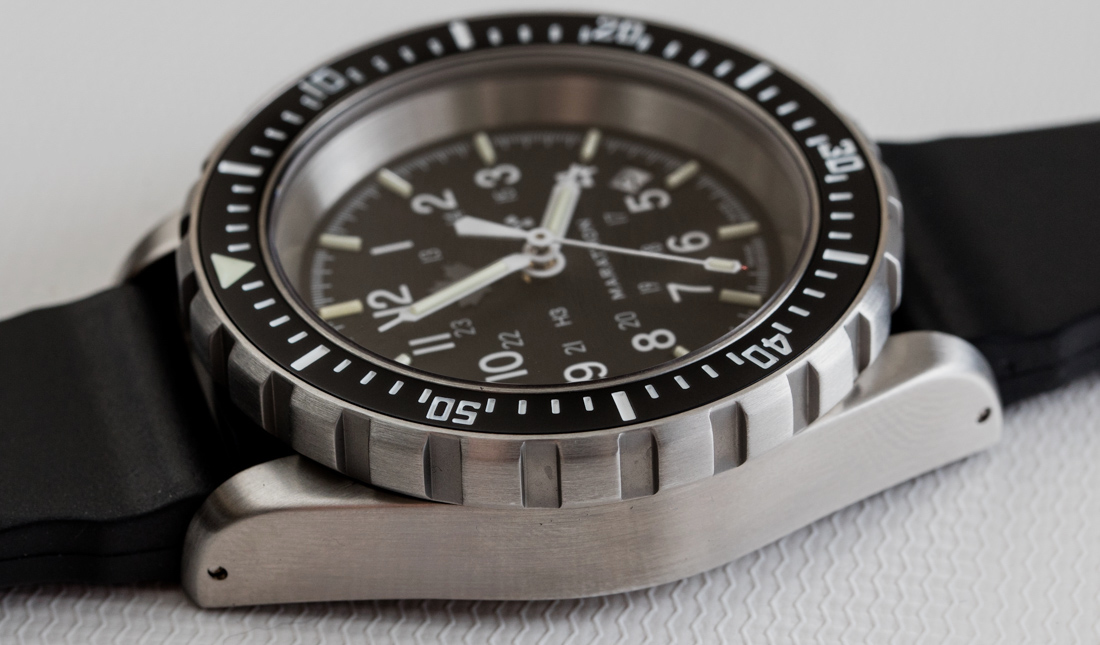
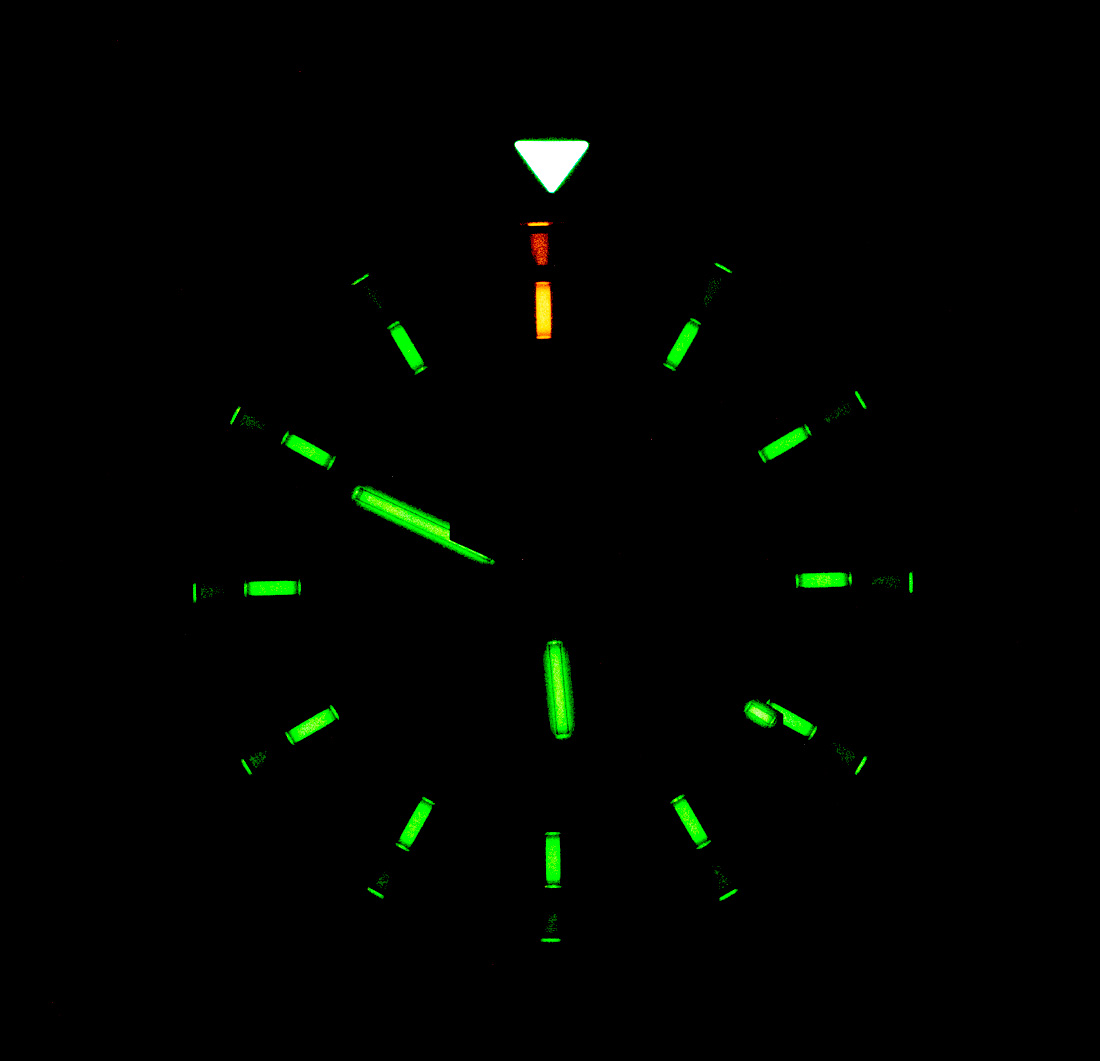
Most who have seen the GSAR have commented generally favorably on the “depth of the dial,” and I have to also say that compared to some other tritium gas tube-based watches I’ve worn, the Marathon Search & Rescue Diver’s Automatic GSAR Grey Maple is extremely bright. I’m not sure if that is because Marathon uses more tritium, but according to the caseback, there are 26 millicuries in it. In the dark, the dial actually lights up noticeable whereas many of the other tritium gas-tube based watches I’ve worn merely given a dull, albeit legible glow.
